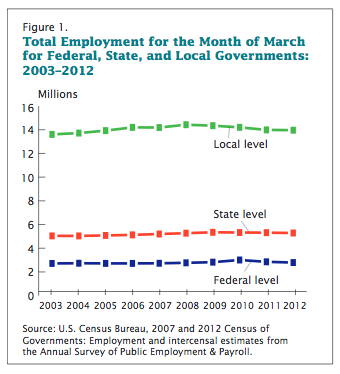If the Republican Party does well in congressional elections this fall, its leader will surely claim a mandate for smaller government. And they’ll probably have lots of polling data to support their cause — such as a Gallup survey from last December that found 72 percent of Americans choosing “big government” as a bigger threat than big business or big labor.
It’s hard to separate the popular belief that government is too big, and getting bigger, from perceptions of what the government does with its money. For example, there is the persistent myth that we could greatly reduce deficits by cutting foreign aid: Another poll from last year found that the average guess is that 28 percent of the federal budget goes to foreign aid, when the actual figure is about 1 percent.
There is also a tendency to think of “government” as referring to Washington, which explains why voter turnout is consistently higher for presidential and congressional races than for state and municipal elections. And most of us find it easier to contemplate firing IRS workers than teachers and firefighters in our neighborhoods.
Earlier this month, the U.S. Census Bureau reminded us where most public-sector employees are. Its Census of Governments: Employment report (PDF here) estimates that 14 million people worked for local governments as of March 2012, compared with 5.3 million for state governments and 2.7 million (or 13 percent of the total) for the federal government. This distribution was roughly the same over the previous decade, but the federal government lost ground from 2011 to 2012. The number of federal employees (including part-timers) dropped by 2.2 percent, while the number of state employees fell by 0.5 percent and there was no statistically significant change in the number of local-government employees.
Among local-government employees, 59 percent worked in the education sector. (This translates to 50 percent of all employees at all levels of government.) Police protection was the second-largest category, at 6.3 percent of all municipal employees, followed by hospitals at 4.5 percent and fire protection at 3.1 percent.
Firing teachers is a tough political sell, in part because both major parties stress education as a way to lift people out of poverty and help them find jobs. Better to let voters think there’s big savings in cutting out the deadwood in D.C.








